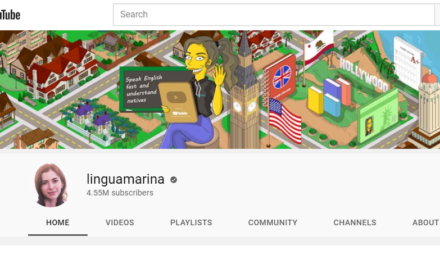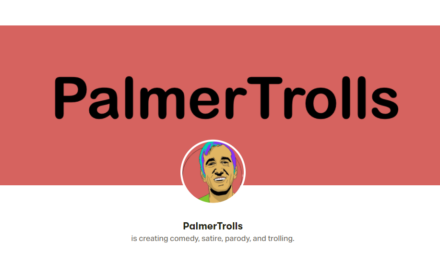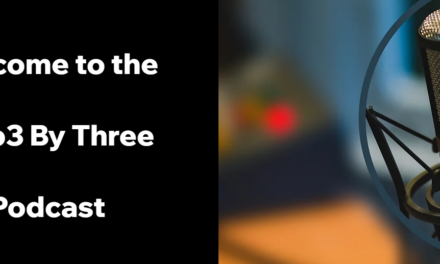
FEBRUARY 21, 2025
full tilt
Do You Have the Right Insurance for Your Content Business?
Mistakes – even unintentional ones – happen. You publish something without realizing a portion was copyrighted or fail to fact-check a piece of information correctly. A guest on your live podcast makes a slanderous remark.
Accidents happen, too, even with the most thorough planning. A cyber thief accesses your database, gaining all that personal information you retain.
But you can (and should) do something now to mitigate the potential financial impact on you and your business. It’s also good to have insurance to comply with client and partner requirements and to indicate your business is not a hobby or fly-by-the-seat-of-its-pants operation.
MFE Insurance Brokerage outlines three types of insurance required for podcasters, but they can apply to content entrepreneurs regardless of content products – errors and omissions, general liability, and cyber liability.
General liability insurance: All business types should have general liability insurance (and it’s the type most often required in third-party contracts). And it’s valuable even if you don’t have a physical space where someone could get hurt, or property could be damaged. It covers “advertising injury,” too.
“So you’re covered if someone sues you for … making false claims or posting their content without permission,” according to Practice’s insurance guide for writers.
Errors and omissions insurance: Also known as professional liability insurance, it can apply to content products, where a mistake causes a customer to lose money, or consulting services, where clients blame your advice for a loss.
As MFE explains, E&O insurance covers transgressions such as plagiarism, accidentally slanderous remarks, trademark or copyright infringement, and misappropriation of personal details about your guests or sources.
In addition to paying valid claims, according to Chubb Insurance, E&O insurance can help with legal expenses required to deal with any claim (even frivolous ones).
Cyber insurance: Although it is a relative newcomer to the insurance category, every content entrepreneur should consider it, given how closely tied their business is to digital data and publishing.
In its cyber liability guide, JP Morgan Chase explains that this type of policy supports entrepreneurs who experience a cyberattack that results in data loss or a breach of confidential information.
Its coverage includes recovery costs for revenue losses from the business interruption, restoration of personal identities of impacted audience members, communication to stakeholders, and civil fines and penalties.
Cyber insurance also can be valuable if you’re a victim of cyber extortion. I know of one author who had his book draft file stolen and received a digital ransom note demanding payment to return the file. (He didn’t do it, but the incident also works as a reminder to save your files on an external hard drive.)
Understanding the policy numbers: You can acquire insurance in several ways – going directly to the insurance company, working with an agent or broker, or using the insurance benefits program from a professional group or association you belong to.
But no matter which route you take, you’ll have to make some decisions, including the policy limits, the deductible, and the premium.
With general liability, E&O, and cyber insurance, you likely will have two limits – claim and aggregate. The claim limit is the maximum amount paid for a single claim. The aggregate limit is the total amount your policy covers for all claims in a specified period (usually a year).
The deductible is the amount your business will pay before the insurance pays. And the premium is the amount you pay to hold a valid insurance policy.
Not surprisingly, all three components are tied together. So, if you have opt for a higher policy limit, you’ll have a higher premium. If you pick a higher deductible, you’ll have a lower premium.
Of course, the size, scope, and location of your business also affect premium rates. In general, small businesses can expect to pay $30 to $60 a month for general liability, $50 to $100 a month for E&O, and over $140 a month for cyber, according to multiple insurance sites.
– Ann Gynn
|
supported by: Grow Your Content Business, Not Your To-Do ListBuilding a membership business shouldn’t mean adding more to your plate. With Memberful, you can create a thriving, recurring revenue stream—without the overwhelm. Memberful’s built-in features work seamlessly alongside your favorite tools, letting you focus on what you do best: creating great content. Plus, you always maintain full control over your content, audience, and business.No complicated tech. No need to start from scratch. Just a simple , yet powerful way to offer memberships, paid newsletters, and exclusive content your audience will love. Scaling your business should be smart, not stressful. Ready to make membership work for you?
|
tilt publishing book club
- Beta bet … Here’s some great advice: “Beta readers must represent the target audience. If you’re writing for investors, your brother the nurse isn’t the best beta reader.” [Josh Bernoff]
- $100K breakdown … Multilayered read from Jen Glantz on self-publishing vs. traditional publishing and how $100K in self-publishing revenue doesn’t need to come just from books. [Odd Jobs]
- Buy and read it on their terms … Amazon won’t let buyers of digital books download them to a computer and copy them manually to other digital readers (Kindle or otherwise). [The Verge]
- Verify so they’ll trust … No matter the publishing path, book writers are responsible for getting their facts checked. [Esquire]
things to know
Money
-
Big investment: Early-stage venture capitalist firm Slow Ventures launched a $60M fund to invest in creators and help them launch businesses. Why? An exec says audiences attach themselves to creators as people, so what they can build is greater than a single product from an existing brand. [Tech Crunch]
Tilt Take: The VC strategy still focuses on the individual creator, but that’s often what’s needed to launch a creator brand. -
Off-platform bucks: YouTube’s CEO points out more than half of YouTube channels earning at least five figures (US dollars) make money from sources other than ads and YouTube Premium. [YouTube]
Tilt Take: Diversifying your revenue streams is essential to long-term success.
Audiences
-
Smidgen of a drop: About 10% of TikTok US users have dropped their daily active use since the first week of January, and viewership is back on the rise since the second week of February. [The Information]
Tilt Take: Was it much ado about nothing or a warning sign to never rely on a single platform (and one that controls access to your audience)? We think the latter.
Tech and Tools
-
Easier advertising: Google Ads appears to be testing a new feature called Advanced Plans in its Reach Planner. The tool suggests a mix of ad types based on the advertiser’s goals and could help advertisers more effectively allocate budgets across ad types based on conversion goals. [Search Engine Land]
Tilt Take: Making the most of your ad budget makes the most sense.
And Finally
-
Welcome in: Creator and social agency Whalar Group will open the doors to its first campus for content creators. This month, it’s Venice, Calif. Later this spring, it’s Brooklyn, and in 2026, London joins the list. [Fast Company]
Tilt Take: Working in the same space as other creators opens up opportunities for collaboration, motivation, and shared (i.e., less expense) equipment and studios.
business of content
- We want The Tilt newsletter to be useful and impactful for you, so please take 5 minutes to complete this short poll about the content we send you each week.
- Four Options to Increase Your Survival (Content, Inc.)
- Is Google Primed to Buy Reddit? (This Old Marketing)
- Mastering Book Metadata to Maximize Market Reach (Publish & Prosper)
- ICYMI: Make an Analytics Plan for Your Content Business in 2025
Get more of the Full Tilt stories on TheTilt.com.
Know a content creator who’s going full tilt? DM us or email [email protected].
Want to advertise on The Tilt? Go here.
Or email us at [email protected].
Was this email forwarded to you? Get your own sub here.
Copyright ©2025 Lulu Press, Inc. All rights reserved.
Update your preferences | Unsubscribe | PO Box 12018, Durham, NC 27709





